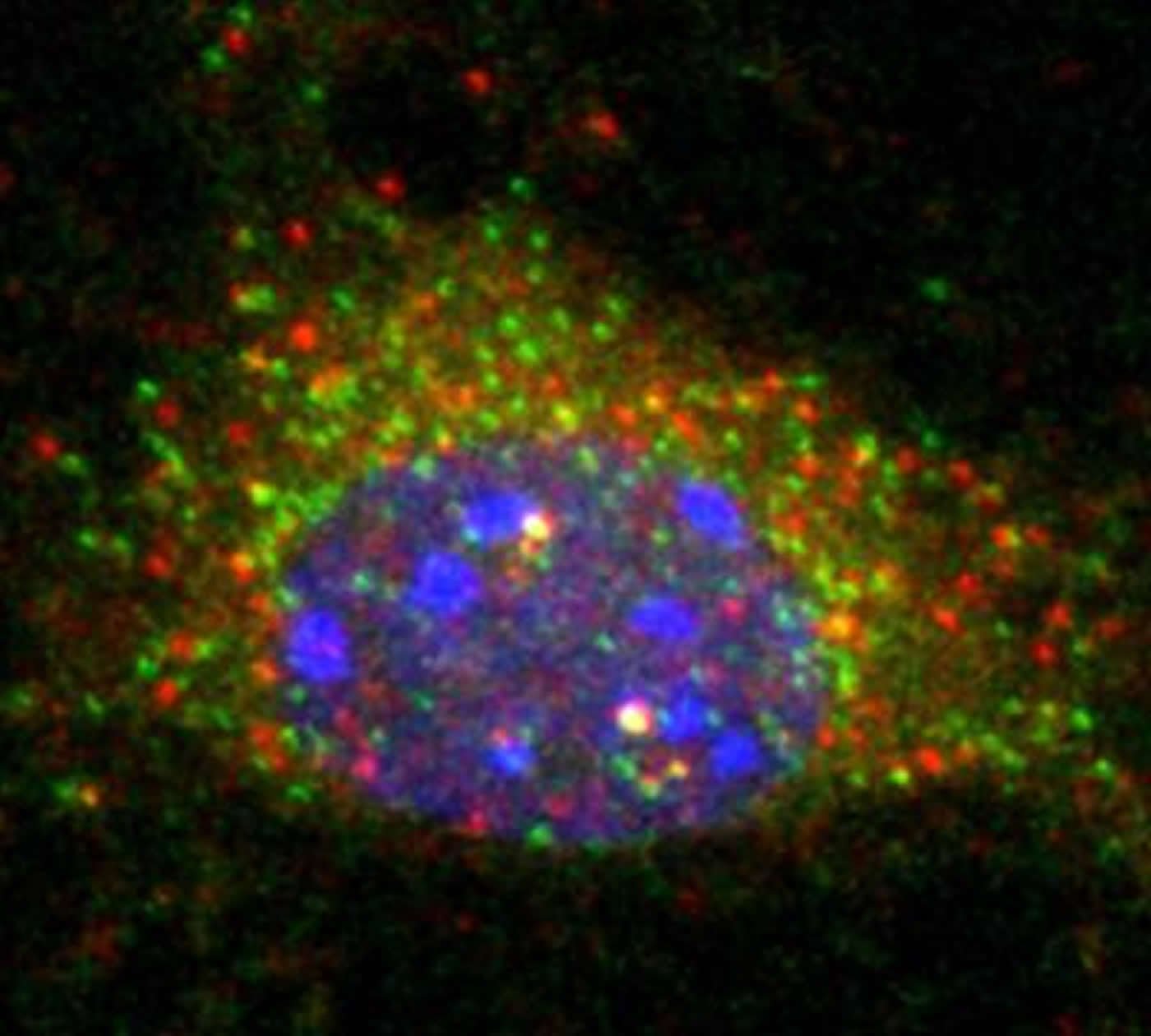The human genome contains some 20,000-25,000 protein-coding genes, which is surprisingly similar to the number of genes in worms and flies. Where does complexity of our organism and behaviour come from? In many genes, coding regions called “exons” are separated by intervening “introns”. Mammals may substantially increase their molecular complexity by removing introns and joining exons in a combinatorial manner. This process known as “alternative splicing” and allowing a single gene to generate multiple protein variants is especially prevalent in the mammalian brain. However, to what extent alternative splicing increases the number of functionally important proteins in individual neurons remains an open question.
A new study from the Centre for Developmental Neurobiology (CDN) at IoPPN, King’s College London carried out in collaboration with the Duke-NUS Medical School, Singapore and the Department of Bioinformatics and Computational Biology, Genentech, USA suggests that neurons often co-express functionally distinct alternative products from the same gene. In a specific example of this scenario, co-occurrence of two alternative variants of the cell polarity factor Cdc42 in the same neuron was essential for proper development of a single axon and several functional dendrites. A fundamental implication of this finding is that alternative splicing may help individual cells increase diversity of their protein products thus facilitating acquisition of complex shapes and functions.
“Another important aspect of our study is that, at least for some genes, co-expression of alternative gene products appears to be an actively regulated process rather than being simply a result of “splicing noise”. said Karen Yap of the CDN and first author of the study.

Dr Eugene Makeyev, last author from the CDN said “We are convinced that additional research in this area will further emphasize functional importance of isoform co-expression at a single-cell level”.
Importantly, genetic modifications blocking alternative splicing of Cdc42 in mice result in incorrectly formed axons and dendrites and, ultimately, structural and behavioural abnormalities. This argues that balanced co-expression of two Cdc42 variants is essential for proper brain development. Future work exploring this possibility will likely produce new insights into mechanisms essential for human wellbeing and deregulated in disease.
Funding: This study was funded by the Biotechnology and Biological Sciences Research Council, Singapore National Medical Research Foundation, Singapore Ministry of Education, A*Star and Duke-NUS.
Source: Andreia Carvalho – King’s College London
Image Source: The image is credited to Karen Yap.
Original Research: Full open access research for “Polarizing the Neuron through Sustained Co-expression of Alternatively Spliced Isoforms” by Karen Yap, Yixin Xiao, Brad A. Friedman, H. Shawn Je, and Eugene V. Makeyev in Cell Reports. Published online April 28 2016 doi:10.1016/j.celrep.2016.04.012
Abstract
Polarizing the Neuron through Sustained Co-expression of Alternatively Spliced Isoforms
Highlights
•Alternative 3′-terminal isoforms often become co-expressed in developing neurons
•Ptbp1/2-dependent and constitutive mechanisms ensure co-expression of Cdc42 isoforms
•Controlled utilization of Cdc42 exon 7 in neurons is required for proper axonogenesis
•Exon-6-containing isoform of Cdc42 promotes formation of dendritic spines in vivo
Summary
Alternative splicing (AS) is an important source of proteome diversity in eukaryotes. However, how this affects protein repertoires at a single-cell level remains an open question. Here, we show that many 3′-terminal exons are persistently co-expressed with their alternatives in mammalian neurons. In an important example of this scenario, cell polarity gene Cdc42, a combination of polypyrimidine tract-binding, protein-dependent, and constitutive splicing mechanisms ensures a halfway switch from the general (E7) to the neuron-specific (E6) alternative 3′-terminal exon during neuronal differentiation. Perturbing the nearly equimolar E6/E7 ratio in neurons results in defects in both axonal and dendritic compartments and suggests that Cdc42E7 is involved in axonogenesis, whereas Cdc42E6 is required for normal development of dendritic spines. Thus, co-expression of a precise blend of functionally distinct splice isoforms rather than a complete switch from one isoform to another underlies proper structural and functional polarization of neurons.
“Polarizing the Neuron through Sustained Co-expression of Alternatively Spliced Isoforms” by Karen Yap, Yixin Xiao, Brad A. Friedman, H. Shawn Je, and Eugene V. Makeyev in Cell Reports. Published online April 28 2016 doi:10.1016/j.celrep.2016.04.012






